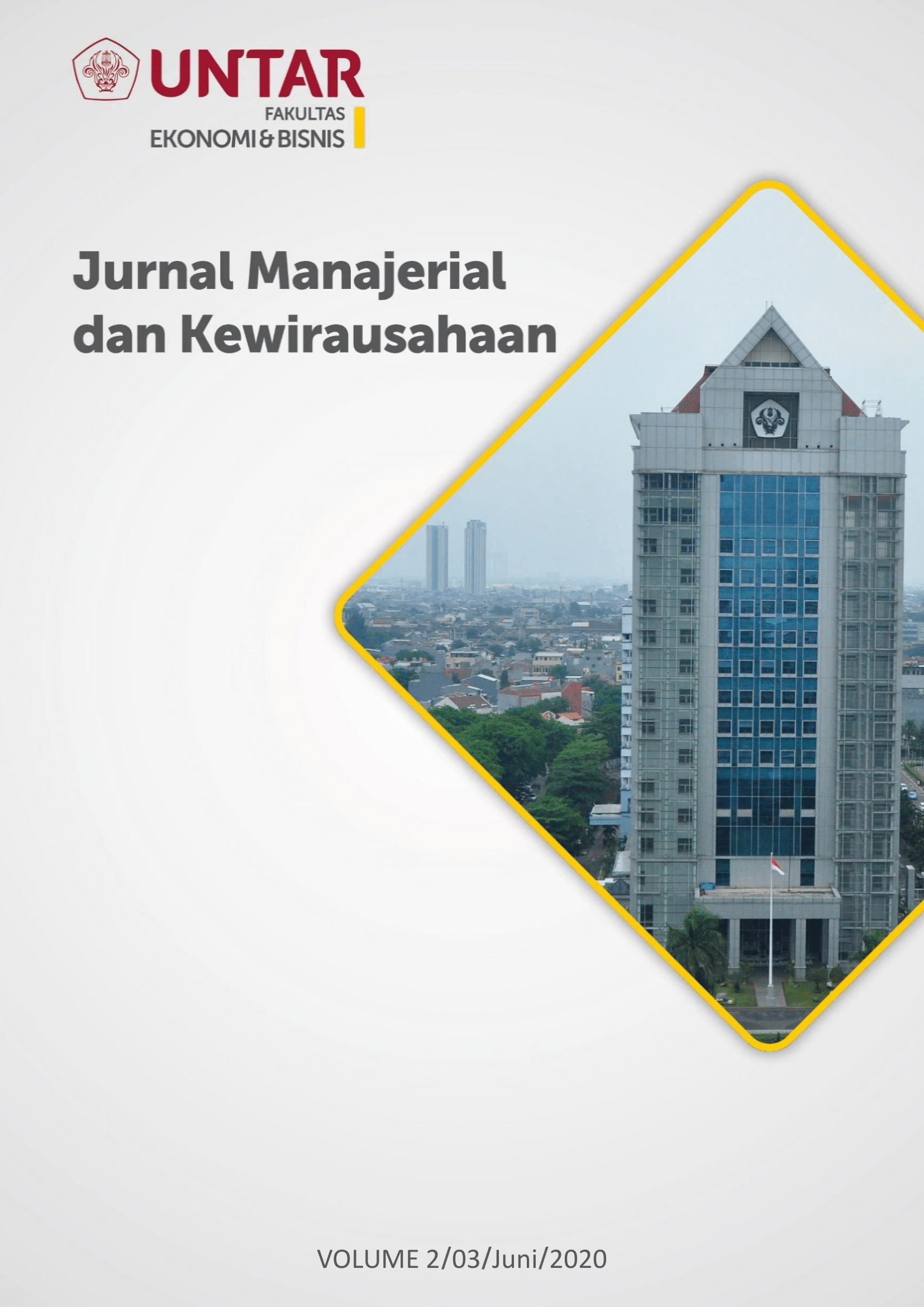Pengaruh Perceived Value, Perceived Quality dan Customer Satisfaction terhadap Customer Loyalty Warunk Upnormal di Jakarta
Main Article Content
Abstract
Research is conducted to find out that there is a significant influence of the three variables, perceived value, perceived quality and customer satisfaction on Customer loyalty. This research was conducted based on the existence of a problem to consumer loyalty to a brand that is indicated due to perceived value, perceived quality and customer satisfaction. This research uses a descriptive research design through a quantitative approach with data collection using a survey method that produces 100 respondents through Google form. The sample in this study were consumers who had visited to make purchases and had visited at least two Warunk Upnormal outlets. The sample selection technique chosen in this study is the Convenience sampling technique. In this study, the findings show that the three independent variables studied were proven to have a significant influence on the dependent variable.
Riset dilakukan guna mengetahui bahwa adanya pengaruh yang signifikan dari ketiga variabel, perceived value, perceived quality dan customer satisfaction terhadap Customer loyalty. Penelitian ini dilakukan berdasarkan adanya suatu masalah terhadap loyalitas konsumen atas sebuah merek yang terindikasi disebabkan oleh perceived value, perceived quality dan customer satisfaction. Penelitian ini menggunakan desain penelitian deskriptif melalui pendekatan kuantitatif dengan pengumpulan data menggunakan metode survei yang menghasilkan 100 responden melalui google form. Sampel pada penelitian ini adalah para konsumen yang pernah berkunjung untuk melakukan pembelian dan sudah pernah sedikitnya dua kali berkunjung ke gerai Warunk Upnormal. Teknik pemilihan sampel yang dipilih pada penelitian ini yaitu menggunakan teknik Convenience sampling. Dalam penelitian ini menghasilkan temuan bahwa ketiga variabel independen yang diteliti terbukti bahwa adnya pengaruh yang cukup signifikan terhadap variabel dependen.
Article Details
This work is licensed under a Jurnal Muara Ilmu Ekonomi dan Bisnis Creative Commons Attribution-ShareAlike 4.0 International License.,/p>
References
Barbara C ?ater and Tomaz ? C ?ater. (2008). Relationship-value-based antecedents of customer satisfaction and loyalty in manufacturing. Journal of Business & Industrial Marketing, 24(8), 585-597.
Bloemer dan J. Kasper. (1995). The complex relationship between consumer satisfaction and brand loyalty. Journal of Economic Psychology, 16(2), 19-24.
Griffin, Jill. (2005). Customer Loyalty: Menumbuhkan dan Mempertahankan Kesetiaan Pelanggan. Erlangga, Jakarta.
Jackie L, Tam. (2010). The moderating role of perceived risk in loyalty intentions: an investigation in a service context. Marketing Intelligence & Planning, 30(1), 33-52.
Jin-Wook Han. (2009). The mediating effect of perceived quality between extrinsic cues and perceived value in ski products. International Journal of Sports Marketing & Sponsorship, 18-32.
H Ana, M. Castillo, C. & Juan Antonio, J. (2017). Quality, Satisfaction and Loyalty Indices. Journal of Place Management and Development, 11(4), 428-446.
Kotler, Philip & Kevin Lane Keller. (2009). Manajemen Pemasaran. Jilid 1. Jakarta: Erlangga.
Kotler, Philip & Kevin Lane Keller. (2012). Manajemen Pemasaran. Jilid 2, Edisi 13. Terjemahan Bob Sabran. Jakarta: Penerbit Erlangga.
Krishna, M, Chun. T, Seow. A, Chew T, C. Lee Y, L. Lim, X. and Teoh W. (2017). Corporate Image no longer leads to customer satisfaction and loyalty: a Malaysian perspective. International Journal of Law and Management, 60(4), 934-952.
Lien-Ti B, Yu-Ching Chiao. (2006). The determinants of customer loyalty: an analysis of intangible factors in three service industries. IJCM, 16(3&4), 162-176.
Oliver, Riscrd L. (1997). Satisfaction A Behavioral Perspective On The Consumer. McGraw-Hill Education, Singapore.
Osman Gök. Pervin, E. Gülmüs, B. (2018). The effect of user manual quality on customer satisfaction: the mediating effect of perceived product quality. Journal of Product & Brand Management, 28(4), 475-488.
Prasanta Kr, C and V. J. Sivakumar. (2017). Understanding psychological contract violation and its consequences on mobile shopping applications use in a developing country context. Journal of Indian Business Research, 10(2), 208-231.
Vanessa Quintal and Ian Phau. (2012). Brand leaders and me-too alternatives: how do consumers choose? Marketing Intelligence & Planning, 31(4), 367-387.



